I had not really heard of this manuscript and that is odd. yet its creation was inspired. The method really did try to combine two alien scholarship traditions to produce a valuable testament available to us today.
During this time ,the population was suffering a severe population contraction and royal patronage was so neccessary to produce this. So it is a miracle to have it. So many local docs were then lost. that we knew.
So this is a blessing.
Codex Mendoza: A Glimpse into the Aztec World
UPDATED 2 APRIL, 2023 - 18:56 LEX LEIGH
https://www.ancient-origins.net/artifacts-ancient-writings/codex-mendoza-0018180?
Ever wanted to step back in time to the days of the Aztecs? With the Codex Mendoza, you can. Reading this document takes you back to the mid-16th century, shortly after the Spanish conquest of Mexico, to the Aztec empire. Named after its first known owner, Antonio de Mendoza, the first viceroy of Mexico, this illustrated manuscript is a masterpiece of history, geography, and culture.
Historians consider the Codex Mendoza one of the most important primary sources for the study of Aztec civilization. So, what exactly is found in the Codex Mendoza that makes it such an important document?
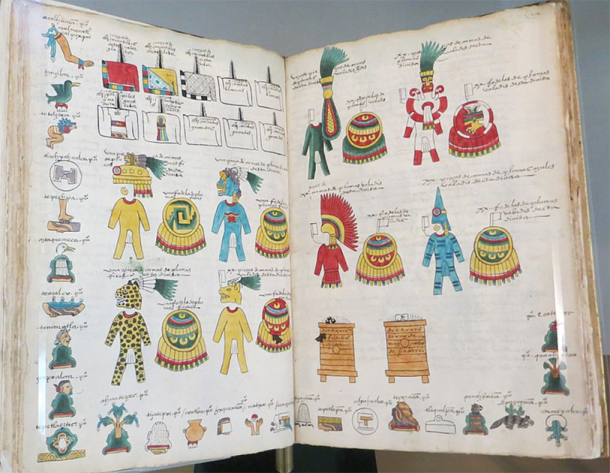
Codex Mendoza in the Bodleian Library, Oxford . (Jononmac46/ CC BY-SA 4.0 )
Antonio de Mendoza’s Greatest Contribution to History
The Codex Mendoza was created in the mid-16th century, just as the Spanish conquest of Mexico was underway. This special manuscript, believed to have been produced between 1541 and 1542, is a remarkable document that showcases the fusion of European and Aztec cultures. Written in Spanish with Nahuatl glosses, the text is accompanied by a wealth of illustrations, which are a combination of European and Aztec pictorial symbols.
According to records, the codex was commissioned by the first viceroy of Mexico, Antonio de Mendoza, as a gift for King Charles V of Spain. Mendoza was mostly popular at the time of his reign, and helped oversee the construction of many roads, bridges, and aqueducts. He also established the first printing press in the New World, which printed books and documents in Spanish and Nahuatl.
The codex was dutifully written under the direction of Spanish officials in Mexico City alongside several Aztec scribes and artists. Once it was complete, it was named after Mendoza as its first known owner.
In the 17th century, the Codex Mendoza found its way to the Bodleian Library at the University of Oxford and has been studied ever since. Today, this exceptional document is regarded as one of the most important surviving artifacts of the Aztec civilization, and scholars of history, anthropology, and art still study it with great interest.
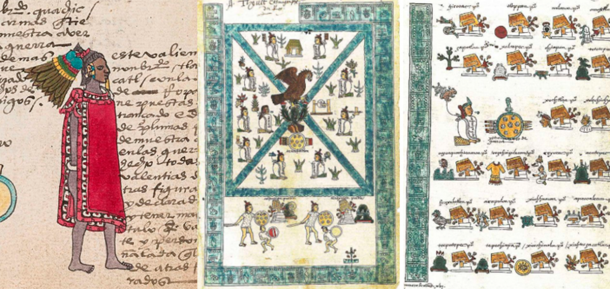
The Mysteries of Aztec Culture Uncovered
The Codex Mendoza is a tantalizing window into the fascinating world of the Aztec civilization. It is considered to be one of the most important surviving documents from this civilization for several reasons.
Upon opening the codex, it provides a gripping account of the Aztec civilization, from its very beginnings to the Spanish conquest. The document details several of the political, social, and economic organizations of the Aztec empire. It also provides descriptions of important historical events that occurred around the time of its creation.
The codex is also a treasure trove of information about the culture and daily life of the Aztecs. It includes an astonishing array of detailed illustrations of their clothing, food, musical instruments, games, and much more. These vivid illustrations offer valuable insights into the material culture of the Aztecs and help us better understand their way of life. In a way, this document is like a glimpse into a day in the life of an Aztec citizen.
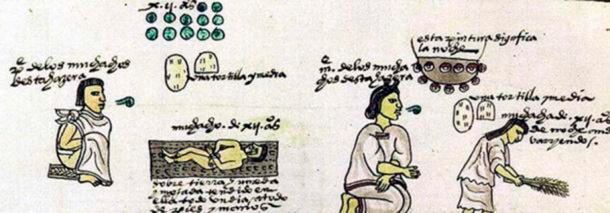
From the Codex Mendoza — a father teaches his son the art of war, and a mother teaches her daughter house chores. The speech is in the scroll glyph. ( Public Domain )
Finally, the codex also contains intricate descriptions of the Aztec religious beliefs and practices. These records can help us better understand the religions and traditions that the Aztecs held so dear. The illustrations in the Codex Mendoza are truly mesmerizing as they provide a vivid and intricate depiction of Aztec life, religion, and culture, which is a fascinating blend of European and Aztec pictorial symbols.
Overall, the Codex Mendoza is an essential historical document that offers a compelling glimpse into the Aztec civilization, helping historians better understand the Aztec people and their unique place in history.
Gods, Sacrifices, and Rituals: A Fascinating History in Three Parts
As previously mentioned, the Codex Mendoza is divided into three unique sections.
The first section of the codex details the origins of the Aztecs and their grand rise to power. The writers recount several epic tales of how the Aztecs conquered neighboring tribes and formed alliances after arriving in the Valley of Mexico in the 13th century.
The genealogy of many Aztec rulers, beginning with the legendary figure of Huitzilopochtli and ending with Moctezuma II , is also chronicled in this section in exquisite detail. This first section also highlights significant historical events, such as the founding of the Aztec capital Tenochtitlan and the construction of several essential temples and other buildings.
The second section of the codex, equally as fascinating as the first, is a meticulous account of tributes paid to the Aztec empire by the various regions and people under its control. Each region is accompanied by a picture and a description of the tribute paid, as well as the ethnic group that paid the tribute.
This section offers a glimpse into the economy of the Aztec empire, as well as some of the cultural and geographic diversity of the regions under Aztec control. It also tells us a bit more about the relationships the Aztecs had with surrounding regions.
The third section of the codex is devoted to the religious beliefs and practices of the Aztecs. It includes a detailed Aztec calendar , along with descriptions of the religious ceremonies and rituals that they held regularly. It also discusses the role of priests in Aztec society, the various deities they worshipped, and some of the sacrifices and offerings made to these deities.
The illustrations in this section are a testament to the vivid imagination of the Aztecs and provide a valuable glimpse into their religious beliefs. With all three of these detailed sections, the Codex Mendoza offers unparalleled insight into the captivating world of the Aztecs.
An Incredible Document Recognized by UNESCO
The Codex Mendoza is a breathtaking time capsule that unlocks the secrets of one of the most intriguing civilizations of the past. It is considered to be one of the most important primary sources for the study of the Aztec civilization, and its value is recognized globally, having been declared a World Heritage document by UNESCO.
This magnificent manuscript has helped historians better understand the Aztec people and their place in history, making the Codex Mendoza an essential document for those who wish to explore the wonders of the past.

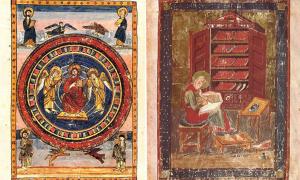
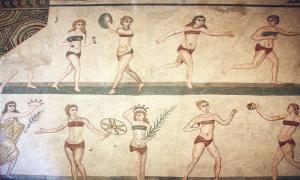
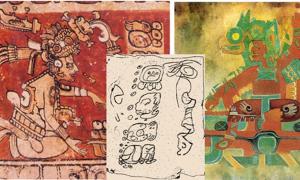
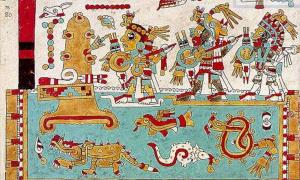
No comments:
Post a Comment